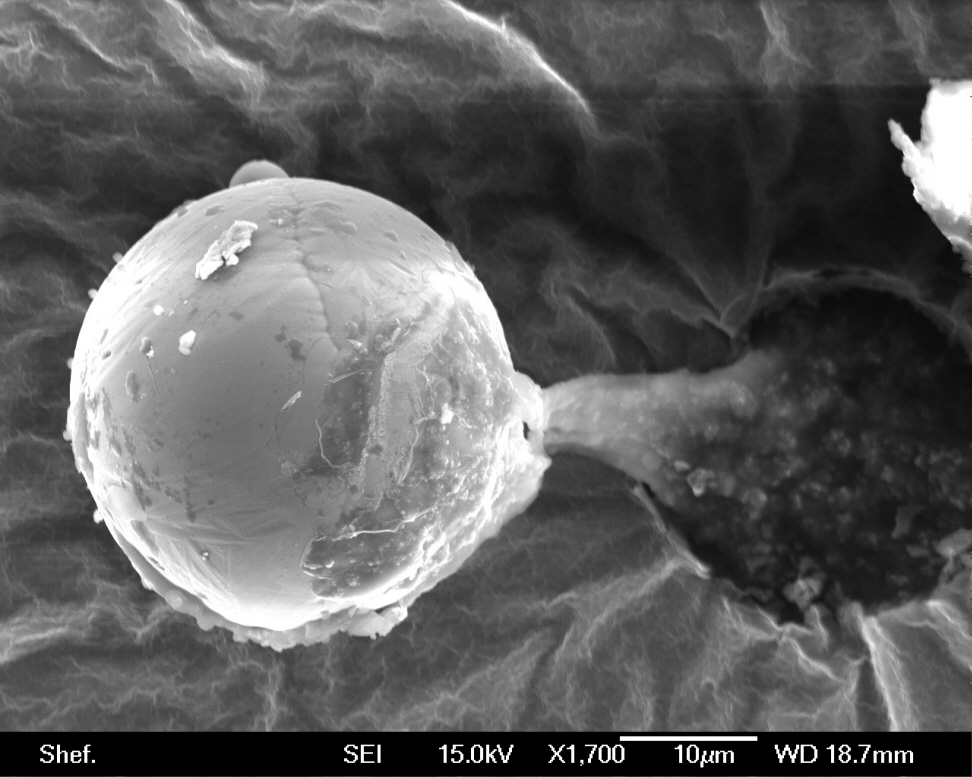– By Mike Sutton –
This blog post conveys a message in the form of a minimally edited news brief sent to me by Professor Milton Wainwright of Sheffield University, England, following my first blog post, on this topic Best Thinking, about his team’s incredible discoveries in the stratosphere.
Hi. Thank you for showing interest in our work.
As you can imagine, we are getting considerable interest, so I have put together a reply on our current progress. I hope this latest news answers your queries,
We have been on a roller coaster since we were last in contact. We have had five launches, three of which have been successful. We continue to isolate unusual organisms from the stratosphere. We are now extremely confident that they come from space based on the following:
1) Although very small, physics tells us that they are too large to have been elevated from Earth to space.
2) The organisms appear on the sampler without any contaminating pollen or grass particles. Our critics need to tell us what mechanism filters out such contamination, only allowing our organisms to reach the stratosphere, if they coming up from Earth?
3) Some of the organisms cause impact events (i.e..,they damage the surface or cause craters) on the sampler showing that they are coming into the stratosphere at speed (from space) and are not lazily floating up from Earth.
4) X-ray analysis (EDX) shows that the particles we collect are not incoming cosmic dust or upcoming volcanic dust, but are organic, i.e. biological organisms.
The work has been published in a peer-reviewed journal (despite what the trollers say) and we can provide referees reports that are highly supportive of our position.
The general scientific community is not, however, engaging us in discussion on this work. I have offered to give a talk at any major meeting, or institution, where I can be shot down in flames, if we are wrong; as yet no offers! We are, however, getting plenty of media coverage. Some of it is of the little green man variety, despite the fact that we provide only scientific copy.
The situation to date then, is that we continue to find new and unusual organisms in the stratosphere, we continue to provide proven published evidence that these come from space. However, we continue to be ignored by the general scientific community.
NASA has sent up a balloon to the stratosphere. Japanese workers are also doing similar work to ours. And so we expect confirmation of our findings soon.
I worry, however, that NASA will claim credit for the finding.
What follows is just one of the referee’s comments on our paper in J.Cosmol. which obviously has been subject to a process of expert review, despite what the ‘armchair Einsteins’ and internet trolls say!
“This paper has been thoughtfully written and reports a fascinating observation that absolutely must be published and communicated to the scientific community. It represents an important .and challenging finding regarding material rigorously sampled in the stratosphere (at a height of between 22- 27 kilometres) and it has been coupled to some innovative and useful thinking about the possible origin of this material.”
Conclusions and the way forward
Finally, we have been reassessing some earlier work done during our association with scientists at Cardiff and India in 2012 and have found images of stratospheric masses at 41km which stain (using DAPI) positive for DNA. These we believe are too big to be coming up from Earth.
Lately, we have sampling of the Northern Lights in Iceland and found more unusual biological entities.
Our more recent work has been published in the equally respectful and peer reviewed (refereed) Journal of Astrobiology and Outreach.
Regards,
Professor Milton Wainwright FRAS (19TH JUNE 2015)
Challenging mere soft majority view ‘knowledge beliefs’ with independently verifiable and disconfirming hard facts
Note: Professor Wainwright (2008 ) and (2011 ) is the only writer that I am aware of, besides me, (Sutton 2014 ) to have had published a scholarly peer-reviewed academic journal article, which presents weighty, hard-fact, confirmatory evidence in support of (1) Some form of Matthewian knowledge contamination and (2) the possibility/probability that Charles Darwin (1859) plagiarised the prior published discovery of the theory of natural selection from Patrick Matthew’s prior publication of 1831.



